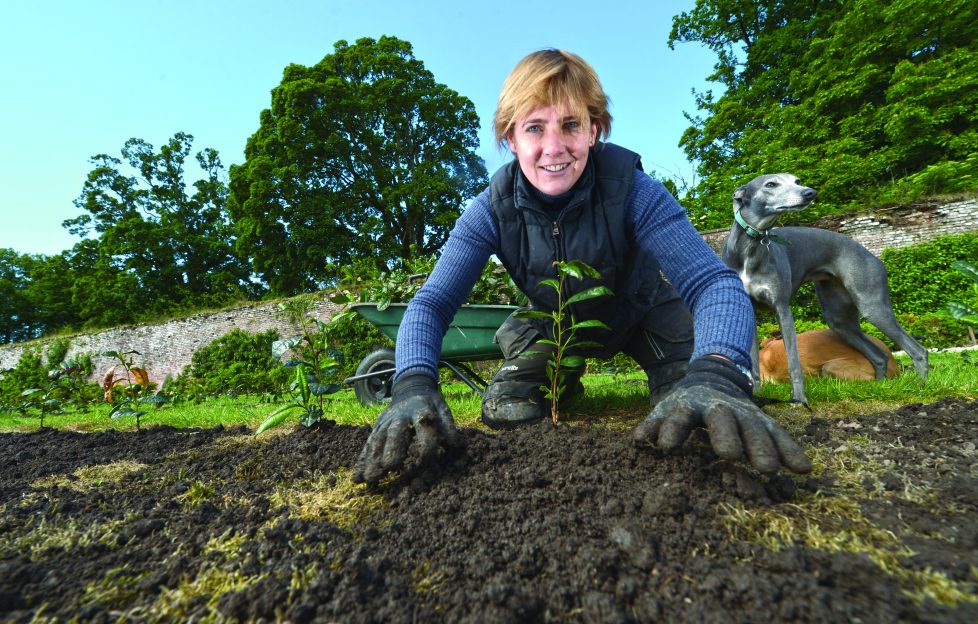
Producer’s Corner: Catherine Drummond-Herdman of Tea Gardens Scotland
When it comes to natural produce, Scotland has a fantastic selection. But one that doesn’t automatically spring to mind is tea.
And while it may seem like an unlikely crop for our wet and windy climate, a small group of Scottish growers are defying the weather to grow it.
For Catherine Drummond-Herdman, of Megginch Castle, growing tea is part of her heritage.
In 1785 her ancestor Robert Drummond, who captained the East Indian tea clipper, The General Elliott, brought a Camellia bush back to Megginch.
It was this bush which is still growing in the castle gardens today, that helped inspire Catherine to start growing tea on a larger scale.
‘Growing tea is in my heritage. My ancestor was the captain of an East India merchant ship. In 1785 he brought back a Camellia bush which was planted in the garden here,’ Catherine said.
‘Around 2008 I started thinking about trying to grow tea in the garden and bought two tea plants.
‘But I forgot all about them until my friend said there was a group of women getting together to see if they could grow tea in their gardens.
‘I thought it was a great idea and told her I’d like to join. It was interesting and exciting to be with other people who are thinking about doing something different and trying new things.’
Catherine is part of Tea Gardens Scotland, a group of nine women from Scotland who all grow the crop in their gardens and produce Nine Ladies Dancing tea, a black tea which is sold at Fortnum & Mason.
Catherine said she finds the whole process fascinating and described growing the tea as ‘horticultural therapy.’
‘In 2012, I was diagnosed with cancer, and you always think, what can one do now?
‘Well I found green tea and I started to drink a lot of it which led me on an incredible journey of discovery.
‘I decided to plant some seeds and at that time I was still in recovery. I knew that simply walking down the garden was going to be the one thing that I had to do each day.
‘It got me up and moving. It was horticultural therapy, I suppose, with the actual seed plant and then the making of the tea.
‘After I joined Tea Gardens Scotland I visited Japan and some tea growers there. I soaked up the atmosphere and enthusiasm for tea, which is huge there.
‘Tea is not just a drink in Japan, it’s a whole culture, everything ties into tea, there is a real enthusiasm for it which I find fascinating.’
But it’s not been plain sailing for Catherine who lost a lot of plants during her first winter when the Beast from the East roared in.
Along the way she has learned what works for the ‘fussy’ plants, which need looking at everyday.
‘They don’t like cold wind and they don’t like having their roots in the water. They are quite fussy sometimes,’ she said.
‘When I went to Sri Lanka with the group, we met an experienced grower and he said “you need to get a look at your plants every day”.
‘And he was absolutely right because you need to see the curl of the leaf or if something doesn’t look right.
‘It’s a bit like a farmer with a herd of cattle or a flock of sheep, you need to know what they’re up to.
‘From planting to harvesting it’s about six years. And the really interesting thing about tea plants is that you can, in theory, make any type of tea from any tea plant.
‘It’s just how you process it and the processing is a huge separate area of knowledge.’
Catherine now has 250 mature plants, 250 young ones and another 500 seeds about to be planted in her two acre walled garden at Megginch Castle where visitors can take tours and drink tea from family China brought back on The General Elliot.
TAGS

